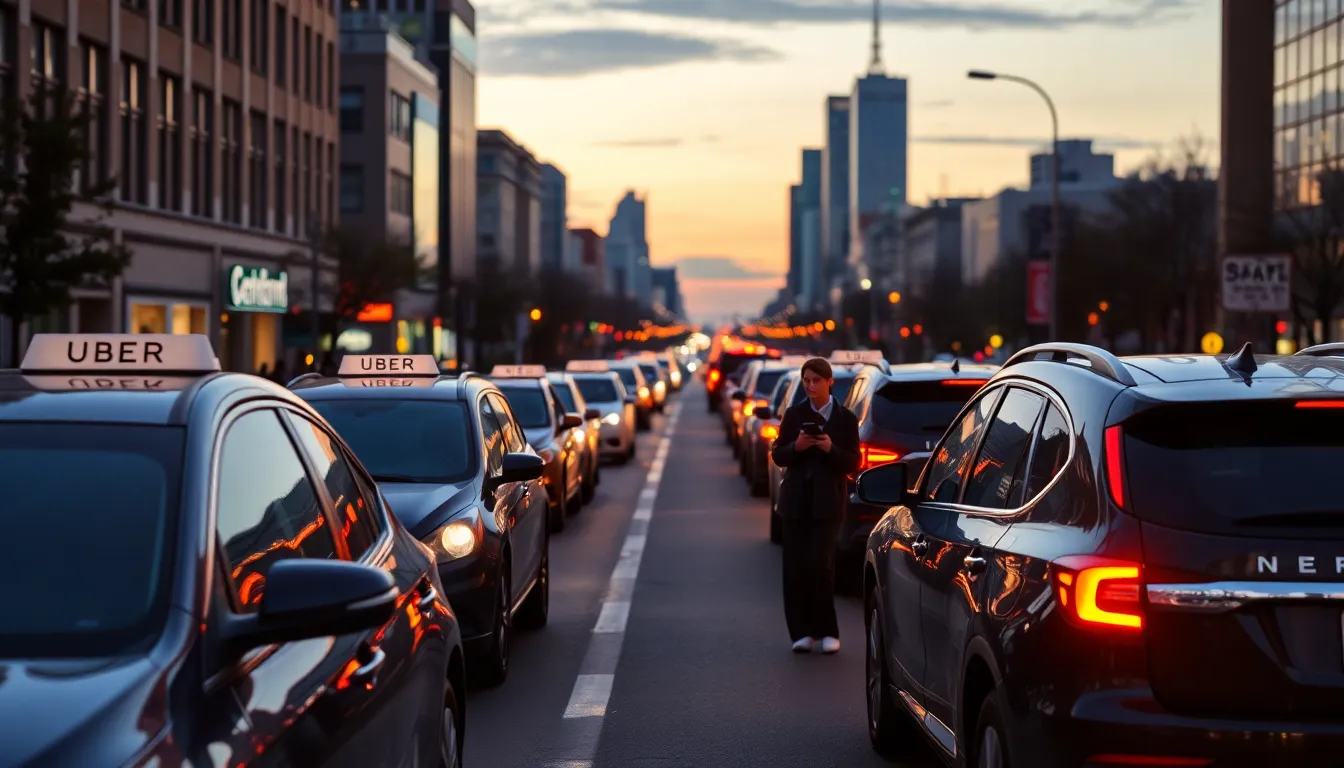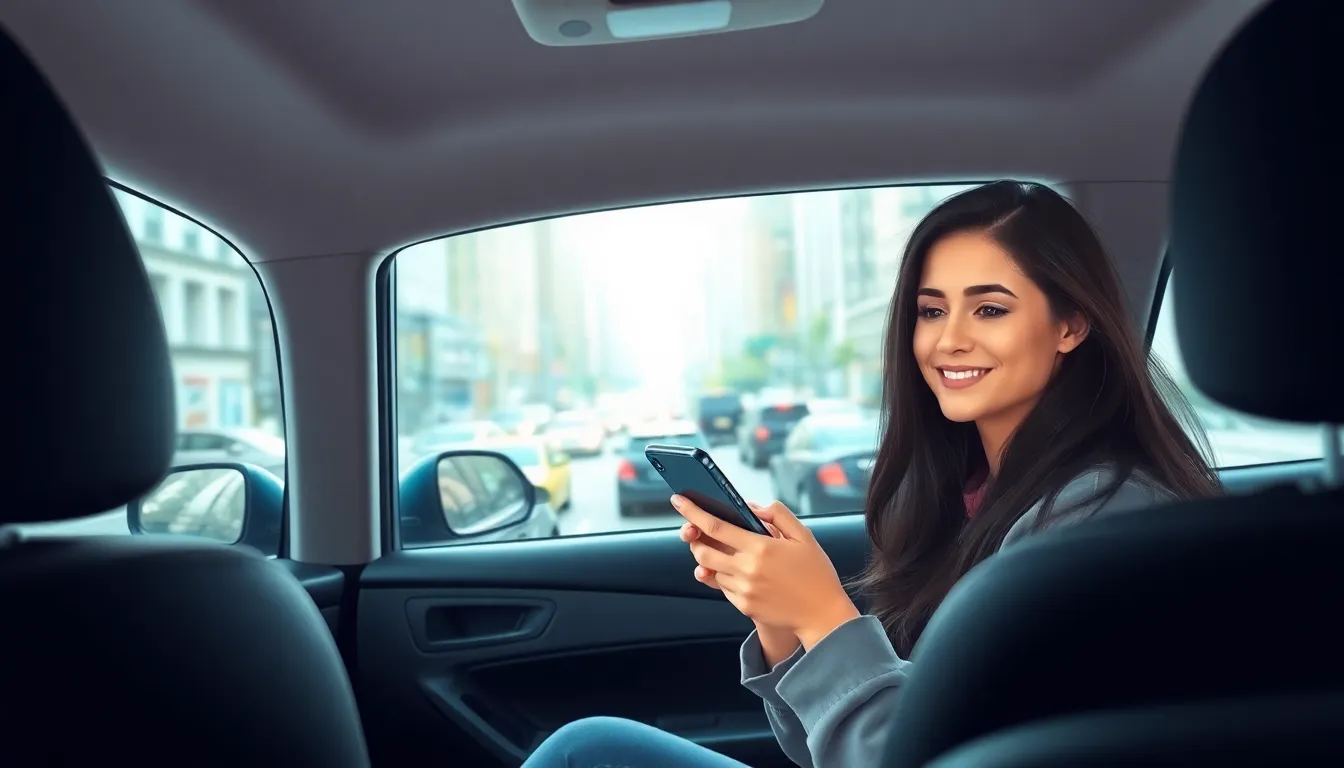In a world where every minute counts and parking spots are rarer than unicorns, Uber has become the go-to solution for getting from point A to point B without the hassle. But as convenient as it is to summon a ride with a tap of a finger, the burning question remains: how much is this ride-hailing magic going to cost?
Table of Contents
ToggleUnderstanding Uber Pricing
Uber pricing consists of several key components. Each part contributes to the total fare, which can vary significantly based on factors like time and location.
Base Fare and Booking Fee
Base fare serves as the starting point for every ride. This amount varies by city and type of service, typically reflecting local conditions. Additionally, a booking fee applies to each trip, covering operational costs. Riders should know both these charges before summoning a ride, as they contribute to the initial fare breakdown.
Surge Pricing
Surge pricing activates during periods of high demand. This model increases rates to balance rider requests with available drivers. Events, weather, and peak hours often trigger surges, making fares unpredictable. Riders can check for surge rates through the app, which indicates increased prices before confirming a ride. Knowing this can help users choose the best time for travel.
Distance and Duration Rates
Distance and duration rates influence the bulk of the fare after base charges. Each minute and mile adds to the total cost, with rates depending on local pricing structures. Longer trips or heavy traffic leads to higher fares. Users can view estimated costs in the app before starting a ride, allowing them to budget their expenses effectively.
Factors Influencing Uber Costs

Uber costs can vary significantly due to several key factors. Understanding these elements helps users anticipate expenses when using the service.
Time of Day
Demand fluctuates throughout the day. During peak hours, like morning and evening commutes, fares increase. Late-night rides may also experience higher rates due to limited driver availability. Additionally, weekends typically see more surge pricing as riders head to social events. Users should plan their trips around these time influences for more economical fares.
Location Differences
Geographic location plays a major role in fare calculation. Urban areas with heavy traffic often lead to increased costs. Conversely, rural locations might have lower rates, but fewer available drivers can result in longer wait times. Competition among ride-hailing services in specific regions can also affect pricing, sometimes benefiting the rider. Always check local fare estimates in the app before booking a ride.
Type of Uber Service
Different Uber service types come with unique pricing structures. UberX provides a standard ride at the lowest fare among options. Luxury options like Uber Lux carry higher rates due to enhanced service and vehicle quality. Ride-sharing services, such as Uber Pool, may offer lower fares since passengers share trips. Choose the type of service that best aligns with budget and needs for optimal savings.
Comparing Uber with Other Transportation Options
Understanding the cost of Uber often involves comparing it with other transportation options. Each alternative offers unique benefits and pricing structures.
Traditional Taxis
Traditional taxis use a meter to determine fares based on distance and time, often resulting in a higher rate than Uber for similar trips. Urban locations may see higher taxi fares due to additional fees, like airport surcharges. Riders may appreciate knowing the fare upfront in some taxi services, though this isn’t consistent. Payment methods vary as some taxis require cash, while others accept cards. Surge pricing doesn’t apply to taxis, but increased demand can lead to longer wait times, impacting overall convenience.
Public Transportation
Public transportation generally provides the most cost-effective way to travel, especially for daily commutes. Buses and trains often charge fixed fares, making budgeting straightforward, but services may vary by city. Reliability can fluctuate, especially during peak hours or adverse weather, leading to potential delays. While public transit might save money, it sacrifices convenience and direct routes found in ride-hailing apps. Riders sometimes need additional time for transfers, impacting total travel duration.
Ride-Sharing Alternatives
Ride-sharing alternatives like Lyft and Via present similar pricing structures to Uber, making them competitive but distinct. Similar to Uber, these services calculate fares based on distance, time, and demand. Lyft may attract riders with promotions and incentives that Uber doesn’t offer. Via, known for pooling options, allows users to share rides for lower costs while extending wait times. Customers may benefit from comparing all available services to secure the best fare for their needs and preferences.
Tips to Save on Uber Rides
Saving on Uber rides requires strategic planning and awareness of available options. Employing specific techniques can help lower transportation costs while maintaining convenience.
Promo Codes and Discounts
Promo codes often provide immediate fare reductions. Uber frequently distributes discounts via email or promotions on social media. Checking third-party websites can reveal current offers as well. Always enter applicable codes before requesting a ride to maximize savings. Keeping an eye on expiration dates is crucial, as some promotions may last for a limited time.
Choosing the Right Service
Each Uber service type has its own cost structure. UberX serves as the most economical choice, ideal for individual riders or small groups. Choosing Uber Pool allows multiple passengers to share a ride, which lowers individual fares. In contrast, Uber Lux offers a premium experience at a higher price. Evaluating the group’s size and travel needs aids in selecting the most cost-effective service.
Carpooling Options
Carpooling creates significant savings for riders. Uber Pool connects users traveling in the same direction, thus splitting the fare. Users can save up to 50% compared to standard options. Additionally, carpooling promotes environmental benefits by reducing the number of vehicles on the road. Opting for this shared ride option enhances accessibility without sacrificing budget.
Understanding Uber costs is essential for anyone looking to use the service effectively. By considering factors like surge pricing and geographic location users can make informed decisions about their rides. With various service options available it’s possible to find a choice that fits both budget and needs.
Utilizing tips for saving on fares can further enhance the experience. Whether it’s opting for Uber Pool or keeping an eye out for promotions every little bit helps. Ultimately the convenience of Uber combined with smart budgeting allows users to enjoy seamless transportation without breaking the bank.



